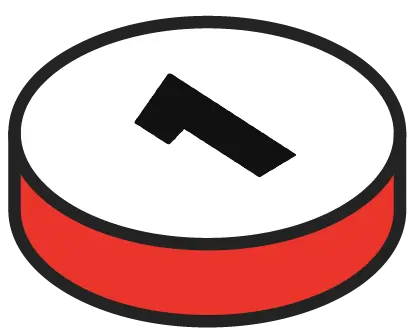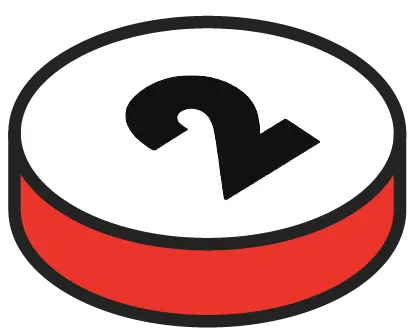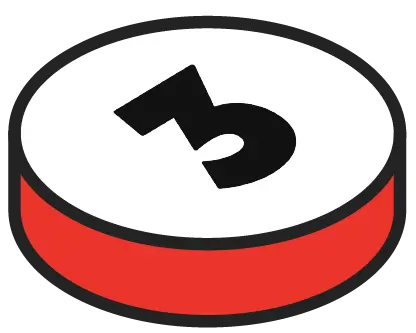[et_pb_section fb_built=”1″ _builder_version=”4.27.4″ _module_preset=”default” global_colors_info=”{}” theme_builder_area=”post_content”][et_pb_row _builder_version=”4.27.4″ _module_preset=”default” global_colors_info=”{}” theme_builder_area=”post_content”][et_pb_column type=”4_4″ _builder_version=”4.27.4″ _module_preset=”default” global_colors_info=”{}” theme_builder_area=”post_content”][et_pb_text _builder_version=”4.27.4″ _module_preset=”default” global_colors_info=”{}” theme_builder_area=”post_content”]
In modern industry, in modern industry, accurately measuring performance is a strategic lever for improving a company’s results. This is where industrial performance indicators come into play. industrial performance indicatorsor KPIs (Key Performance Indicators), play a central role. They make it possible to monitor the company’s performance. yield the productivityquality qualityquality costs or even production timeswith a view to effective process management.
But which indicators should you choose? How can they be measured reliably and in real time? And most importantly, how can you ensure they reflect the reality on the ground and truly help drive improvement?
In this article, we’ll guide you through the different types of indicators, the best practices for using them, and the tools we have at your disposal at TEEPTRAK to boost your company’s performance.
[/et_pb_text][/et_pb_column][/et_pb_row][et_pb_row _builder_version=”4.27.4″ _module_preset=”default” global_colors_info=”{}” theme_builder_area=”post_content”][et_pb_column type=”4_4″ _builder_version=”4.27.4″ _module_preset=”default” global_colors_info=”{}” theme_builder_area=”post_content”][et_pb_text _builder_version=”4.27.4″ _module_preset=”default” global_colors_info=”{}” theme_builder_area=”post_content”]
What is an industrial performance indicator?
Definition and Role of KPIs in Industry
A industrial performance indicator (A KPI-Key Performance Indicator) is a numerical measure used to track the achievement of a specific goal related to an industrial process. It is an essential decision-making tool for evaluating the performance and effectiveness of operations. productivitythe qualityquality cycle timesand manufacturing costs of a product.
In industry, these indicators are used to analyze the actual state of a production line, identify deviations from standards or targets, and quickly implement corrective actions. Un bon KPI doit être reliable, operable and understandable by the company’s various hierarchical levels, from the field to top management.
KPIs, Indicators, Metrics: What’s the Difference?
These terms are often confused, but they are not interchangeable.
- Une métrique est une simple mesure brute (ex : nombre de pièces produites).
- A indicator adds context to this metric (e.g.: scrap rate per 1,000 parts).
- A KPIis a strategic strategicselected because it reflects a major challenge for the company (e.g.: synthetic rate of return – SRR).
🧠 Myth vs reality : “A KPI is not a simple metric.”
It’s not the number that makes the indicator, but the intention to measure and its decision-making value.
Why are they essential for improving productivity and quality?
Industrial KPIs enable you to monitor performance in real time and act on critical levers : downtime, product quality, cost per unit, stock level or even overall yield.
They are essential for:
- Optimizing OEE (Overall Equipment Effectiveness)
- Reducing total production costs
- Improving quality without compromising lead times
- Aligning frontline team objectives with overall company goals
📌 Key figure :
“29% more production after installation of a TEEPTRAK tracking system on a single machine.”
[/et_pb_text][/et_pb_column][/et_pb_row][et_pb_row _builder_version=”4.27.4″ _module_preset=”default” global_colors_info=”{}” theme_builder_area=”post_content”][et_pb_column type=”4_4″ _builder_version=”4.27.4″ _module_preset=”default” global_colors_info=”{}” theme_builder_area=”post_content”][et_pb_text _builder_version=”4.27.4″ _module_preset=”default” global_colors_info=”{}” theme_builder_area=”post_content”]
Aligning frontline team objectives with overall company goals
Productivity Indicators
These indicators measure equipment and production line performance. They are used to identify losses related to the use of time or resources.
Examples:
- OEE (Overall Equipment Effectiveness) = Useful Time / Total Available Time
- Production output = Number of units produced / period
- Cycle time = Total time to produce one unit
👉 These KPIs help optimize process efficiency and avoid downtime.
Financial indicators
They assess profitability and industrial costs related to the manufacturing of a product. They are essential for measuring economic performance.
Examples:
- Manufacturing cost per unit = Total production cost / Number of units
- Margin per unit = Selling price – Unit cost
- Equipment ROI = (Gain obtained – Investment cost) / Investment cost
👉 These indicators help us to make strategic investment and cost optimization decisions.
Quality and Process Indicators
They are used to assess product conformity and industrial process stability.
Examples :
- Scrap rate = Quantity of non-conforming parts / Total quantity produced
- First Pass Yield (FPY) = Good products on first attempt / Total products
- Compliance rate = Products in conformity / Products delivered
👉 These indicators are key to ensuring a consistent level of quality.
👉 Human and HR Indicators
These KPIs track the impact of the human factor on industrial performance.. They provide insight into employee engagement, availability, and skill levels.
Examples:
- Absenteeism Rate = Hours of absence / Theoretical working hours
- Staff turnover rate = Departures / Average workforce
- Training rate = Training hours / Number of employees
👉 They are essential for fine-tuning HR management and maintaining a good working climate.
Maintenance indicators
They are used to measure theeffectiveness of maintenance operations and their impact on equipment availability.
Examples :
- MTTR (Mean Time To Repair) = Total repair time / Number of breakdowns
- MTBF (Mean Time Between Failures) = Uptime / Number of failures
- Preventive maintenance rate = Preventive interventions / Total interventions
👉 This data makes it easier to plan interventions and reduce breakdowns.
Environmental indicators
They measure the environmental impact of production, which is increasingly monitored by stakeholders.
Examples:
- Carbon footprint per unit = CO₂ emissions / Unit produced
- Recycling rate = Recycled materials / Total materials consumed
- Energy consumption = kWh / unit
👉 These KPIs help to reconcile industrial performance and sustainable development.
Logistics and lead time indicators
These indicators track the supply chain fluidity and and ability to deliver on time.
Examples:
- OTD (On-Time Delivery) = Orders delivered on time / Total orders
- Lead Time = Time between order and delivery
- Inventory turnover rate = Sales / Average inventory
👉 They promote better management of flows, inventory and customer satisfaction.
Summary table of the 30 essential KPIs
| Indicator | Target | Simplified formula | Type | Recommended TEEPTRAK |
|---|---|---|---|---|
| OEE | Measuring overall efficiency | Useful time / Available time | Productivity | ✅ |
| Scrap rates | Monitor manufacturing quality | Non-conforming parts / Total | Quality | ✅ |
| MTTR | Repair time | Repair time / No. of breakdowns | Maintenance | ✅ |
| OTD | On-time delivery | Orders delivered on time / Total | Logistics | ✅ |
| Cost per unit | Evaluate production costs | Total cost / No. of units produced | Financial | ✅ |
| Equipment ROI | Return on investment | (Gain – Cost) / Cost | Financial | ✅ |
| Absenteeism rate | Employee availability | Absence hours / Planned hours | HR | ✅ |
| Recycling rate | Environmental impact | Material recycled / Material used | Environment | ✅ |
| Lead Time | Lead Time | Delivery date – order date | Logistics | ✅ |
| RPP (first-pass yield) | Manufacturing performance | 1st pass compliant products / Total | Quality | ✅ |
| MTBF | Machine reliability | Uptime / No. of breakdowns | Maintenance | ✅ |
| Production flow | Volume produced | Number of units / Time | Productivity | ✅ |
📌 Checklist: 5 criteria for selecting a good industrial KPI
- Aligned with a strategic objective
- Based on reliable and accessible data
- Measurable in a regular and consistent manner
- Understandable by the teams
- Quickly actionable in the field
[/et_pb_text][/et_pb_column][/et_pb_row][et_pb_row _builder_version=”4.27.4″ _module_preset=”default” global_colors_info=”{}” theme_builder_area=”post_content”][et_pb_column type=”4_4″ _builder_version=”4.27.4″ _module_preset=”default” global_colors_info=”{}” theme_builder_area=”post_content”][et_pb_text _builder_version=”4.27.4″ _module_preset=”default” global_colors_info=”{}” theme_builder_area=”post_content”]
How to implement an effective KPI-driven management system?
Choose the right indicators based on your objectives
A KPI is never universal it must reflect a specific specific priority of the company at a given point in time. Just because an indicator is technically measurable doesn’t mean it is relevant. The selection should therefore follow a top-down logic:
➡ Strategy → Measurable objectives → Associated indicators
For example, if the objective is to reduce non-quality costswe won’t track machine utilization rate, but rather first-pass first-pass yield or the scrap rate.
It is essential to limit the number of indicators to those that can really be monitored, understood and by operational teams.
🧠 Expert advice :
“Prioritize KPIs that can be acted upon by field teams. An indicator without action levers only serves to observe, not to progress.”
Defining the right data sources
A control system is only effective if the data collected collected is reliable, frequent and complete. Too often, companies rely on manually filled Excel spreadsheets, which introduce bias, omissions, and operational time loss.
The data must be:
- Reliable Direct from machines or sensors
- Accessible available in real time to all stakeholders
- Traceable : kept for sufficient periods to analyze trends
⚠️ Point of vigilance :
Avoid unverifiable manual entries. They distort performance measurement and hide the real levers for improvement.
Create a clear and actionable dashboard
A well-designed dashboard allows for quick decision-making. The goal is not to accumulate charts, but to provide a clear, contextualized view.
Here are the UX best practices:
- Limit to a maximum of 5 to 10 KPIs per user
- Use the color code to identify drifts quickly
- Define custom alert thresholds
- Proposer une vue synthétique par poste ou atelier
Tracking your KPIs in real time: why it’s a game changer
Traditional monitoring (e.g., weekly or monthly) does not allow for sufficient responsiveness to production fluctuations. In contrast, a real-time display indicators allows :
- To immediately detect a drop in performance
- To act promptly on the root causes
- To engage operators in performance
TeepTrak solutions integrate directly into existing equipment, making data instantly visible and data instantly visible and exploitablewhatever the user’s skill level.
🚀 Key benefit :
“Real-time management multiplies the impact of corrective actions. You gain in efficiency, quality and team commitment.”
[/et_pb_text][/et_pb_column][/et_pb_row][et_pb_row _builder_version=”4.27.4″ _module_preset=”default” global_colors_info=”{}” theme_builder_area=”post_content”][et_pb_column type=”4_4″ _builder_version=”4.27.4″ _module_preset=”default” global_colors_info=”{}” theme_builder_area=”post_content”][et_pb_text _builder_version=”4.27.4″ _module_preset=”default” global_colors_info=”{}” theme_builder_area=”post_content”]
Optimize your industrial performance with TEEPTRAK
Real-time monitoring, OEE, and KPIs: our expertise
At TEEPTRAK, we’ve made industrial industrial performance monitoring our specialty. Our technology enables you to measure in real time key indicators such as TRSdowntime, production rates, production variances and scrap rates.
Our systems provide a a clear, continuous and objective what’s happening on the ground, so that every decision is based on reliable data. This addresses a crucial need: improve responsiveness, productivity and cost controlwithout increasing team workloads.
Plug & play, compatible with all equipment
Our solution is designed to adapt to 100% of industrial environments, whether the equipment is new or old. Thanks to a quick installation (often in less than an hour), our modules integrate without modifying existing processes.
We equip both:
- manual assembly lines,
- automated machine tools,
- multi-site workshops with heterogeneous equipment fleets.
Configuration is simple, and our sensors connect to all brands of PLC. No heavy technical requirements to deploy our solutions.
Measure your ROI in just a few weeks
Our customers see a direct direct impact on their productivity, often starting within the first weeks. The gain comes not only from the display but from the action it triggers : reduced downtime, better management of loss causes, team alignment.
We provide you with a free tool to simulate your ROI based on your current data: downtime, throughput, volume, hidden costs, etc.
Practical tip :
“Try our free ROI simulator and identify improvement levers starting today.”
A platform designed for your operators and managers
Our interface has been developed to be quickly and easily by all stakeholders: operators, team leaders, maintenance managers or management.
- L’display is clear, visual and customizable
- The indicators are contextualizedwith thresholds and historical data
- Alerts are intuitive and easy to follow, even on mobile
Result: no need to compile data manually, shorter reaction times reaction times are shortened and each employee gains greater autonomy in the field of performance.
[/et_pb_text][/et_pb_column][/et_pb_row][et_pb_row _builder_version=”4.27.4″ _module_preset=”default” global_colors_info=”{}” theme_builder_area=”post_content”][et_pb_column type=”4_4″ _builder_version=”4.27.4″ _module_preset=”default” global_colors_info=”{}” theme_builder_area=”post_content”][et_pb_text _builder_version=”4.27.4″ _module_preset=”default” global_colors_info=”{}” theme_builder_area=”post_content”]
Case studies: concrete results thanks to performance monitoring
Nutriset: elimination of micro-arrests
Before adopting TEEPTRAK, the Nutriset plant had to cope with a multitude of small stops lasting a few secondsThese were too short to detect manually, but very costly in the long term. By installing our real-time tracking system, the teams were able to identify and eliminate these “invisible “irritants.
“Thanks to TEEPTRAK, we’ve eliminated the microstops that were slowing down our lines. The return on investment was almost immediate.”
– Sylvain ClausseEIA Coordinator, Nutriset
PSA: +15 points OEE
Chez PSA, la collecte manuelle de données mobilisait trop de ressources, pour une exploitation partielle. Avec l’intégration de la solution PerfTrak, les opérateurs ont été libérés des tâches chronophages et ont pu se concentrer sur des actions à valeur ajoutée. Résultat : un gain de 10 à 15 points de TRS et des analyses accessibles en temps réel.
“PerfTrak est déjà rentabilisé. Nos opérateurs sont désormais acteurs de la performance.”
— Christophe Pasquet, Groupe PSA Stellantis
Hutchinson : 29 % de production supplémentaire
En installant TEEPTRAK sur une seule machine, Hutchinson a observé une augmentation significative de la cadence, avec 29 % de pièces produites en plus par heure. This gain represents more than 19,000 in additional income per yearfor one position only.
“Performance has become visible to everyone. And teams naturally challenge each other.”
– Philippe DevauxIndustrial Process Manager, Hutchinson
Eolane: standardized multi-site monitoring
Eolane managed several industrial sites with heterogeneous tools. Thanks to our solution, they were able to set up a standardized performance monitoringThis makes it easier to compare performance, increase skills and make rapid group-wide decisions.
“A common tool, consistent analyses and a real economic gain.”
– Vincent PerraultHead of Industrial Resources, Groupe Eolane
[/et_pb_text][/et_pb_column][/et_pb_row][et_pb_row _builder_version=”4.27.4″ _module_preset=”default” global_colors_info=”{}” theme_builder_area=”post_content”][et_pb_column type=”4_4″ _builder_version=”4.27.4″ _module_preset=”default” global_colors_info=”{}” theme_builder_area=”post_content”][et_pb_text _builder_version=”4.27.4″ _module_preset=”default” global_colors_info=”{}” theme_builder_area=”post_content”]
FAQ – Answers to frequently asked questions
[/et_pb_text][/et_pb_column][/et_pb_row][et_pb_row _builder_version=”4.27.4″ _module_preset=”default” global_colors_info=”{}” theme_builder_area=”post_content”][et_pb_column type=”4_4″ _builder_version=”4.27.4″ _module_preset=”default” global_colors_info=”{}” theme_builder_area=”post_content”][et_pb_accordion _builder_version=”4.27.4″ _module_preset=”default” global_colors_info=”{}” theme_builder_area=”post_content”][et_pb_accordion_item title=”What are the 5 types of indicators?” open=”on” _builder_version=”4.27.4″ _module_preset=”default” global_colors_info=”{}” theme_builder_area=”post_content”]
A general distinction is made between :
- Productivity productivity,
- From quality,
- Financial,
- Environmental,
- And RH.
Each measures a complementary facet of industrial performance.
[/et_pb_accordion_item][et_pb_accordion_item title=”What are the performance indicators?” _builder_version=”4.27.4″ _module_preset=”default” global_colors_info=”{}” theme_builder_area=”post_content” open=”off”]
These are key measures used to assess theefficiencyefficiency profitabilityand compliance and adaptability of a process or a company. They can be quantitative (OEE, unit cost) or qualitative (customer satisfaction rate, ISO compliance).
[/et_pb_accordion_item][et_pb_accordion_item title=”What are the 4 types of performance?” _builder_version=”4.27.4″ _module_preset=”default” global_colors_info=”{}” theme_builder_area=”post_content” open=”off”]
Industrial performance can be broken down into :
- Economic (costs, margins),
- Opérationnelle (productivité, TRS),
- Organizational (agility, coordination),
- Environmental (carbon footprint, consumption).
[/et_pb_accordion_item][et_pb_accordion_item title=”What are the production performance indicators?” _builder_version=”4.27.4″ _module_preset=”default” global_colors_info=”{}” theme_builder_area=”post_content” open=”off”]
These are the KPIs directly linked to production lines: OEE, throughput, yield, scrap rate, downtime or MTBF. They help to optimize the use of resources and reduce losses.
[/et_pb_accordion_item][et_pb_accordion_item title=”How do you choose the right KPIs?” _builder_version=”4.27.4″ _module_preset=”default” global_colors_info=”{}” theme_builder_area=”post_content” open=”off”]
Start with your strategic objectives What you want to improve. Then select indicators measurable, reliable and usable in the field. The fewer the better – quality over quantity.
[/et_pb_accordion_item][et_pb_accordion_item title=”How can I view data in real time?” _builder_version=”4.27.4″ _module_preset=”default” global_colors_info=”{}” theme_builder_area=”post_content” open=”off”]
Solutions such as Teeptrak allow indicators to be displayed live on screen, tablet or cell phone. This offers immediate reactivity to correct deviations as soon as they appear.
[/et_pb_accordion_item][/et_pb_accordion][/et_pb_column][/et_pb_row][et_pb_row _builder_version=”4.27.4″ _module_preset=”default” global_colors_info=”{}” theme_builder_area=”post_content”][et_pb_column type=”4_4″ _builder_version=”4.27.4″ _module_preset=”default” global_colors_info=”{}” theme_builder_area=”post_content”][et_pb_text _builder_version=”4.27.4″ _module_preset=”default” global_colors_info=”{}” theme_builder_area=”post_content”]
Take action to unleash the full potential of your industrial performance
Mastering your industrial performance indicators means regaining control of your production, reducing your costs and committing your teams to concrete results.
At TEEPTRAKwe support you with simple, powerful tools that connect to your challenges in the field.
🎯 Want to take action?
👉 Test our ROI simulator or contact us for a personalized demo.
[/et_pb_text][/et_pb_column][/et_pb_row][/et_pb_section]






 Continuous improvement (Lean, Kaizen), which consists in gradually optimizing processes.
Continuous improvement (Lean, Kaizen), which consists in gradually optimizing processes. Improvement through innovation, which relies on new technologies and tools.
Improvement through innovation, which relies on new technologies and tools. Improvement through disruption, which involves radical changes in methods or strategies to transform industrial management.
Improvement through disruption, which involves radical changes in methods or strategies to transform industrial management.


